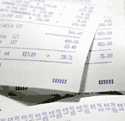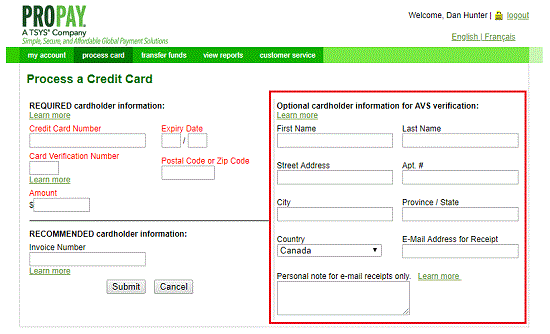Avoid getting scammed
 Accepting cards is an excellent way to grow your business and increase customer satisfaction. However, it is possible to be scammed when accepting credit cards. Cardholders can dispute a transaction you process up to six months after making the purchase.
Such a dispute is called a chargeback. Accepting cards is an excellent way to grow your business and increase customer satisfaction. However, it is possible to be scammed when accepting credit cards. Cardholders can dispute a transaction you process up to six months after making the purchase.
Such a dispute is called a chargeback.
Chargebacks are forced refunds done by your customer's bank. Money is removed from your ProPay Account and it is difficult to get it back.
Preventing chargebacks is very important in avoiding getting scammed. Click here for more information about chargebacks.
3 simple ways to protect yourself from chargebacks:
1. Let your customers know what will appear on their credit card statements.
2. Gather detailed documentation on every sale.
3. Verify your customer's address, especially if you are shipping, or do not have an established relationship.
1. Let your customers know what will appear on their credit card statements.
 Sometimes customers do not recognize your charge on their statements and think the transaction is fraudulent. When they issue a chargeback you lose the money from the sale and must pay a chargeback fee. It is easy to prevent this problem. Just let your customers know in advance that your name or e-mail address will appear on their statements. Most card issuers will also report your phone number so the customer can call you if they have questions. Sometimes customers do not recognize your charge on their statements and think the transaction is fraudulent. When they issue a chargeback you lose the money from the sale and must pay a chargeback fee. It is easy to prevent this problem. Just let your customers know in advance that your name or e-mail address will appear on their statements. Most card issuers will also report your phone number so the customer can call you if they have questions.
It is also a good idea to encourage your customers to communicate their card purchases to their spouses or significant others to avoid confusion.
2. Gather detailed documentation on every sale.
If one of your customers does issue a chargeback against you, they conditionally get the transaction amount returned to them. So you stand to take a big loss. However, if you have detailed documentation of your sale, you can issue a rebuttal to get your money back. The better your documentation, the better your chances of winning your rebuttal.
Detailed documentation must include a receipt signed by the cardholder. Order forms, invoices, and bills of sale are also effective proof of the transaction.
3. Verify your customer's address, especially if you are shipping, or do not have an established relationship.
Sometimes your sales are not face-to-face, and your customer asks you to ship products to them. You have no way of getting a signature or seeing the actual card. You may not be completely comfortable with a particular customer and want to know a bit more about them. Either way, your chances of getting scammed could increase. A good way to protect yourself is to verify your customer's address.
When you process a card transaction, you can enter your customer's billing address to verify its accuracy. The address you should enter is the customer's billing address (see example 1).
EXAMPLE 1

You will see the results of the address verification on the success screen after your transaction is submitted (example 2). If the address or part of the address does not match, the transaction will still be completed. However, if you are uncomfortable with the results, you may immediately void the transaction.
EXAMPLE 2

Click here to learn more about how addresses are verified, and what the address codes mean. If you are shipping products to your customer, you should ship only to a verified address. That way, if a chargeback arises, you can prove that you shipped the product to the cardholder.
Verifying the address of a customer you have concerns with will decrease your level of risk. If the address does not match, you can simply void the charge, contact your customer to get the correct address, and then re-submit the transaction.
|